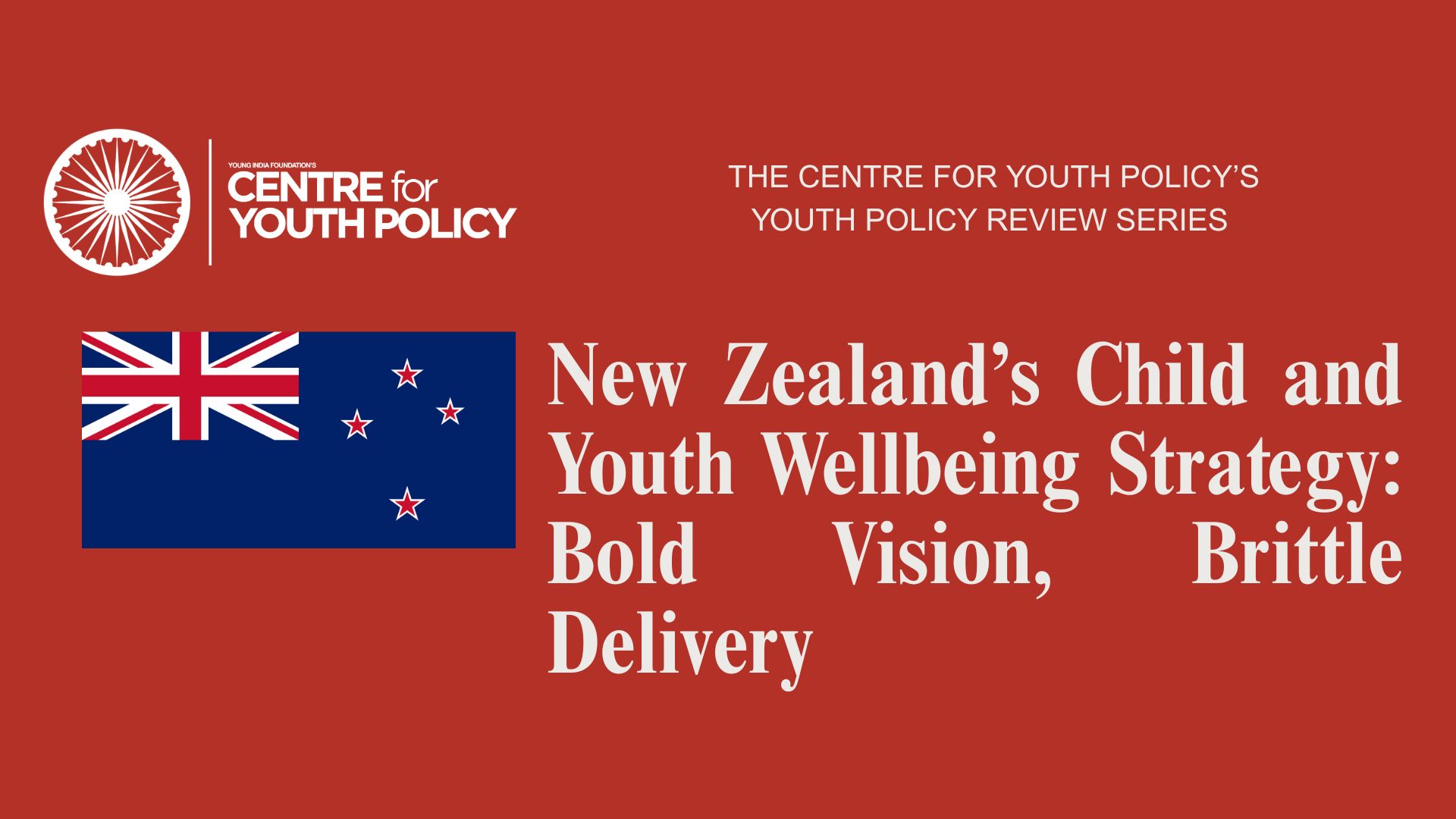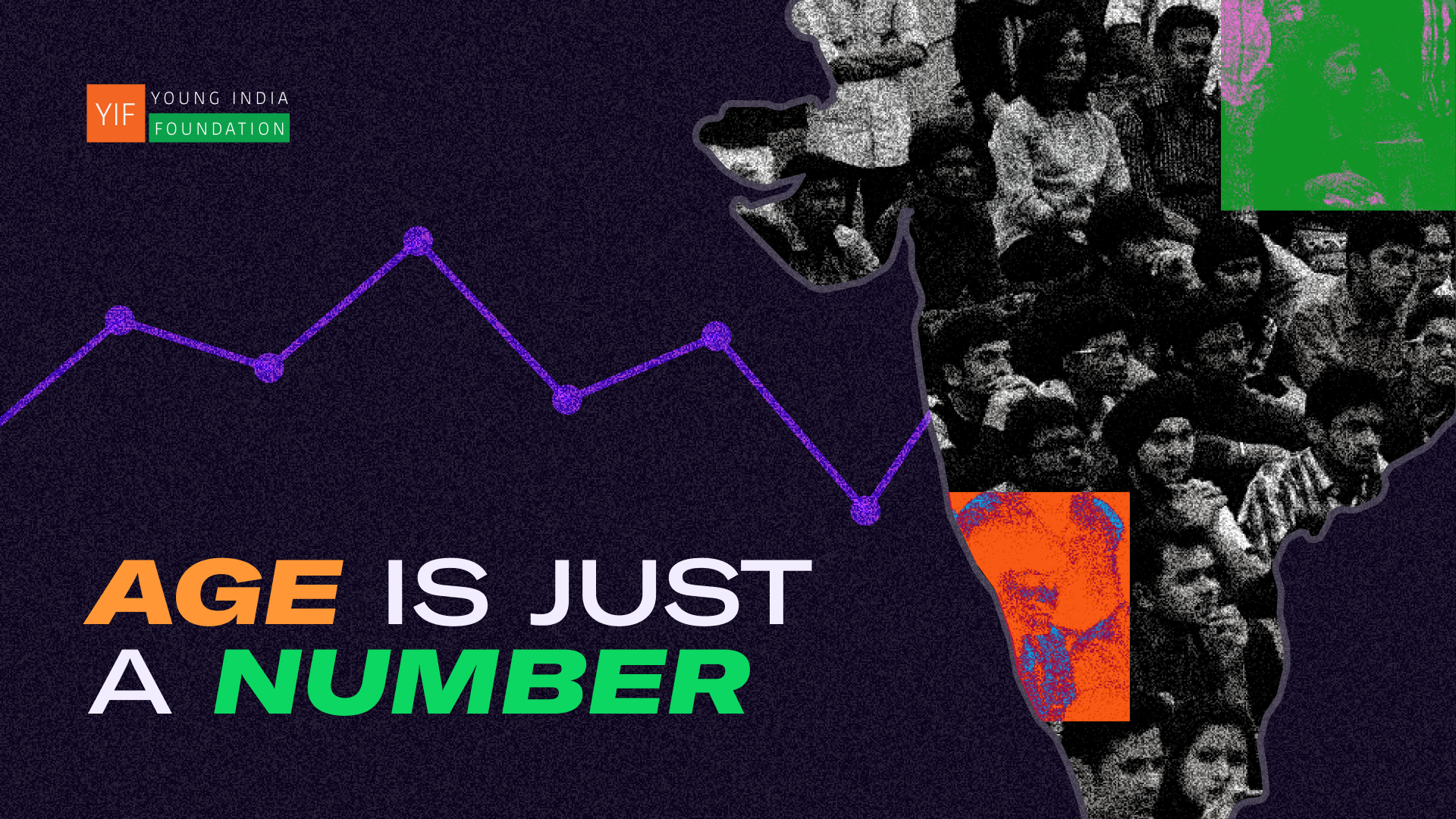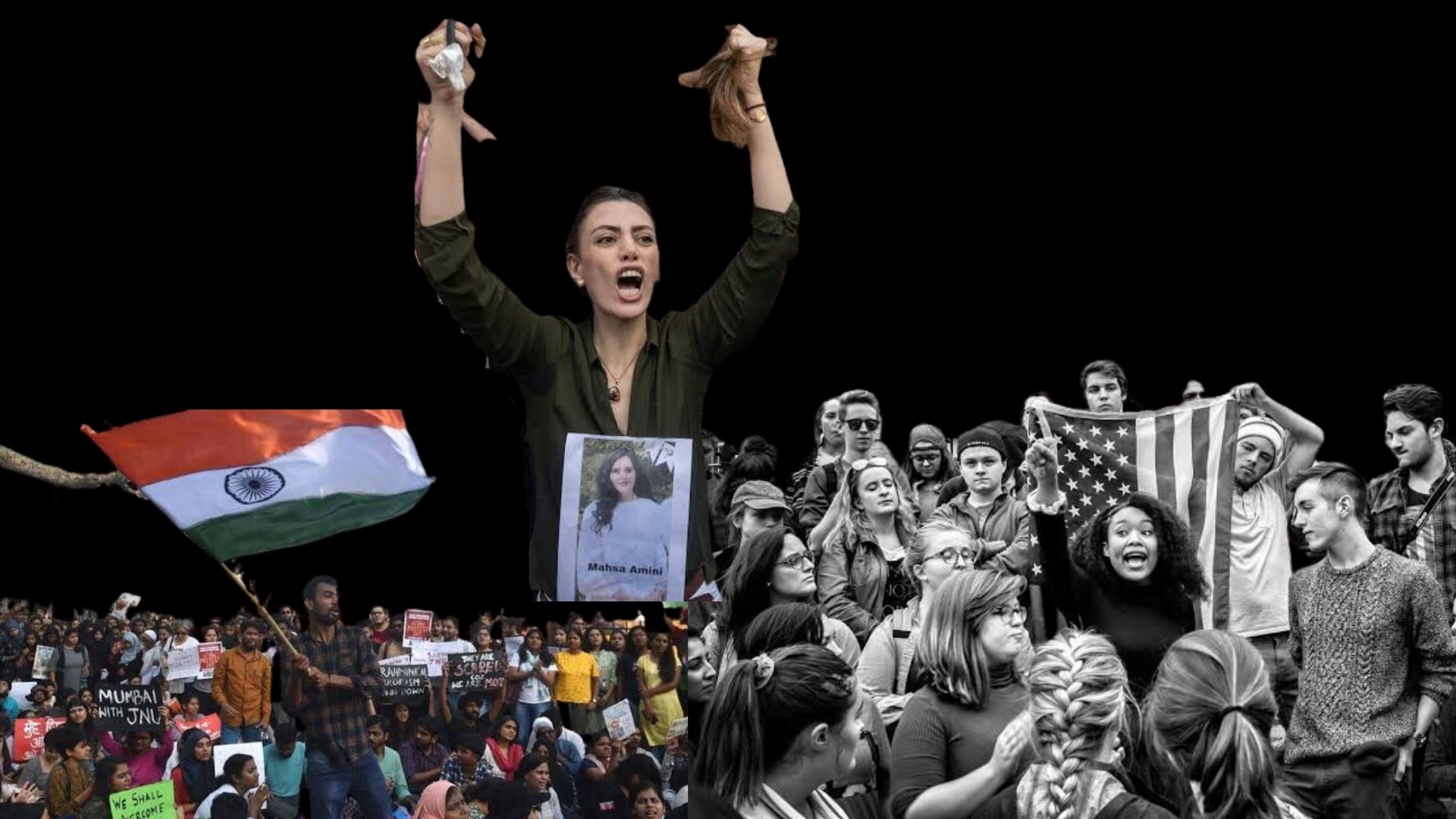New Zealand is often praised as one of the world’s most progressive and liveable nations. Its international reputation is built on low corruption, political stability, and a high quality of life. To outsiders, it can seem like a near-perfect place to grow up. Yet in 2019, the government acknowledged that this image did not reflect the lived reality of many young people. With ~1.1 million children and youth under 18, the largest youth generation in the country’s history, New Zealand faced uncomfortable truths: stubborn child poverty rates, some of the highest youth suicide rates in the Organisation for Economic Co-operation and Development (OECD), and systemic inequities affecting Māori and Pasifika youth.
It was in this context, and following international pressure from the United Nations on its child rights record, that New Zealand launched the Child and Youth Wellbeing Strategy in 2019. The vision was ambitious: to make New Zealand “the best place in the world for children and young people.” Even the strategy itself recognises that it’s a rather bold vision, but more than 6000 children and young people shared ideas and feedback that shaped its priorities. But over five years on, a key question remains: has this ambition translated into actionable change yet? Or can well-designed youth policies also falter when implementation fails to keep pace with vision?
Background of the Policy- Inclusive and Comprehensive
The Child and Youth Wellbeing Strategy (2019) was developed by the Department of the Prime Minister and Cabinet, with input from the Ministry of Youth Development and the Office of the Children’s Commissioner. Before this strategy, New Zealand’s approach to youth policy was fragmented: individual ministries ran isolated programmes, and policies often addressed education, health, or employment separately, without a unified vision for young people.
The 2019 Strategy was different. It was the country’s first coordinated cross-government framework, designed to ensure that all government agencies work together to improve the lives of children and young people. It also reflects New Zealand’s effort to address historical and structural inequities.
The process itself was commendable in terms of its inclusivity. More than 6,000 children and young people contributed through surveys, workshops, and community meetings, including groups often excluded from policymaking. Māori rangatahi (the youth of the indigenous Māori population) were actively consulted through iwi (tribal) networks and youth councils, which allow young people to connect with decision-makers and bring perspectives rooted in Māori cultural values such as whānau (extended family) and collective wellbeing. This reflected the government’s obligation to honour Te Tiriti o Waitangi (the Treaty of Waitangi), a foundational document that recognises Māori rights and sovereignty.
Pasifika youth from Pacific Islander communities, many of whom face systemic barriers in education and employment, also had their voices included. They were engaged through community centres, churches, and youth networks. Refugee and migrant youth, disabled young people, and LGBTQ+ youth also participated. Participants shared insights about mental health, education, employment, and cultural identity, which were directly embedded in the Strategy, signalling that young people’s voices were central rather than tokenistic. The Strategy integrates youth perspectives throughout, sometimes quoting them directly, signalling an effort to centre their voices. It deliberately centres their perspectives, treating them as experts on their own lives rather than passive recipients of adult decision-making. There was also an intentional focus on indigenous priorities as opposed to imposing a generic, Western-centric approach.
The Strategy is also closely linked to the Child Poverty Reduction Act (2018), which legally obliges the government to set, monitor, and report on child poverty targets. By connecting the Strategy to this legislation, youth wellbeing was framed not just as aspirational, but as a rights-based, measurable commitment. This alignment reflects New Zealand’s obligations under the UN Convention on the Rights of the Child (UNCRC), reinforcing that the extensive youth consultations were intended to influence tangible outcomes, from reducing material hardship to improving access to education and healthcare.
Internationally, the strategy was hailed as a model of progressive youth policy. UNICEF described it as “world-leading” for its inclusive process. It was highlighted as a model for other nations seeking to develop youth policies that go beyond welfare or economic metrics. But policy design and policy delivery are two different things; the gap between the two is where much of the story lies. As with many ambitious policies, while the inclusive framework is impressive on paper, turning these ideas into tangible improvements in the day-to-day lives of New Zealand’s young people remains a central challenge, and the heart of the Strategy’s ongoing story as a new one is in progress for The Child and Youth Strategy 2024-27. However, it is currently a forward-looking note since it's still in development, but it certainly signals hope for further improvements in the future.
Central Pillars of the Strategy
The Child and Youth Wellbeing Strategy (2019) is anchored in the Children’s Act 2014, which requires the government to adopt a strategy and report on progress. It was shaped by thousands of submissions, including more than 6,000 children and young people, and sets out six wellbeing outcomes as the foundation of New Zealand’s youth policy. Each outcome is linked to indicators and specific policy actions, giving the Strategy both a vision and a monitoring framework.
1. Loved, safe, and nurtured:
This outcome emphasises a child’s right to stability, love, and freedom from harm. It envisions children growing up in safe homes, spending quality time with whānau (extended family), and being protected from abuse and neglect. Indicators include whether children feel loved and safe, levels of family wellbeing, and prevalence of injury or violence. Government actions tied to this outcome include extensions to paid parental leave, Whānau Ora programmes, family-violence prevention strategies, and an Oranga Tamariki (state care) Action Plan.
While the indicators are comprehensive, critics argue that reforms to Oranga Tamariki have been slow, and Māori children remain disproportionately represented in state care, raising questions about whether policy actions are adequately matched to outcomes.
2. Material wellbeing (having what they need):
Here the Strategy targets children’s basic material needs: income, housing, food security, and access to essentials. It explicitly ties progress to the Child Poverty Reduction Act 2018, which requires annual reporting on measures such as material hardship, food insecurity, and housing affordability. Actions include welfare reforms, raising the minimum wage, expanding public housing supply, and piloting free school lunches and reduced-cost healthcare.
The legal link to poverty reduction makes this outcome stronger than others, but progress has been mixed. Child poverty rates have not fallen as quickly as expected, and housing affordability continues to worsen, suggesting that structural reforms in housing and income distribution are still lagging.
3. Healthy (physical and mental wellbeing):
The Strategy frames health holistically, starting before birth and extending through mental and physical wellbeing. It includes indicators such as prenatal care, preventable hospital admissions, subjective health status, and youth suicide rates. Actions include redesigning maternity services, expanding school-based health services, and overhauling mental health and addiction services following an independent inquiry.
Despite strong recognition of mental health challenges, New Zealand continues to have one of the highest youth suicide rates in the OECD. Services remain uneven across regions, and Māori and Pasifika youth report worse outcomes, highlighting a gap between ambition and delivery.
4. Learning and developing:
This outcome covers education and skill-building: early childhood learning, school attendance, literacy and numeracy, socio-emotional skills, and smooth transitions into work or further study. Indicators include attendance, achievement in core subjects, and rates of youth in education, employment, or training. Policies include a Learning Support Action Plan, new equity funding for schools, reforms to vocational education, and fees-free tertiary initiatives.
The focus on equity is promising, but attendance rates have declined in recent years and Māori and Pasifika students continue to face barriers. The Strategy outlines what should be achieved, but it provides little clarity on how systemic inequities in education will be dismantled.
5. Accepted, respected, and connected:
This outcome focuses on belonging, respect, and cultural identity. It seeks to reduce bullying and discrimination, while strengthening cultural connection and language use. Indicators include children’s reported sense of belonging, experiences of racism, and support for cultural identity. Policies linked to this outcome include Māori language revitalisation through Maihi Karauna, Pasifika language plans, and anti-racism initiatives.
By placing Te Tiriti o Waitangi at its core, the Strategy acknowledges New Zealand’s foundational partnership with Māori. Yet critics note that without stronger accountability for systemic racism in schools, health services, and the justice system, the ambitious cultural goals risk being more symbolic than transformative.
6. Participating and empowered:
The final outcome highlights the importance of youth voice, autonomy, and democratic participation. Indicators include levels of civic engagement, enrolment and voting rates, youth involvement in community groups, and rates of risky behaviour and offending. Actions include a Youth Action Plan, the national WhatAboutMe? survey of youth wellbeing, and tools to increase representation of children and youth in planning and policy.
This outcome is innovative in recognising young people as political actors, not just future workers. However, voter turnout among young people remains low, and there is no move to lower the voting or candidacy age. Critics argue that without structural reforms in political participation, youth voices remain consulted but not empowered.
Strong, But Not Without Cracks
The six outcomes collectively create a powerful architecture: holistic goals, measurable indicators, and alignment with international rights frameworks. The Strategy is distinctive for its whole-of-government approach, ministries are expected to coordinate rather than work in silos, with annual reporting to Parliament on progress. Its linkage to the Child Poverty Reduction Act gives at least one outcome statutory force, setting a higher bar for accountability.
Yet the Strategy is ultimately a policy framework, not a law in itself. It sets out “what should be achieved,” but often leaves “how” to individual agencies and budgets. That flexibility makes it adaptable, but also fragile. The vision is progressive and participatory, but whether it translates into transformation depends on sustained investment, political will, and confronting inequities that remain deeply embedded in New Zealand society.
Limitations and Critiques
For all its ambition, the Child and Youth Wellbeing Strategy has struggled to deliver at the scale its vision demands. Five years on, the gap between policy design and lived outcomes remains wide.
There is an Implementation lag. The Strategy’s link to the Child Poverty Reduction Act gave it a rare legal backbone, but progress on poverty reduction has been slow. According to the Child Poverty Monitor 2023, around one in five children still live in households experiencing material hardship. UNICEF New Zealand has similarly warned that child wellbeing outcomes are stagnating, with some indicators worsening since the Strategy’s launch.
Mental health crisis pervades as well. Nowhere is this gap more visible than in mental health. New Zealand continues to record among the highest youth suicide rates in the OECD. The Strategy acknowledged the crisis and promised system-wide transformation, yet access to services remains inconsistent. Māori and Pasifika young people in particular face higher rates of distress and greater difficulty accessing culturally safe care, reflecting inequities the Strategy has yet to address structurally.
Underfunding and fragmentation remain primary issues despite the fanfare of “Wellbeing Budgets,” many programmes linked to the Strategy remain small-scale pilots or scattered across agencies. Funding is often rebranded rather than newly allocated, leaving initiatives vulnerable to political shifts. The Strategy’s strength, its whole-of-government ambition, can also be a weakness, as agencies pursue their own priorities without clear enforcement mechanisms.
Although a lot has been done, equity gaps continue to exist. Although the Strategy rightly emphasises Māori and Pasifika youth, the outcomes for these groups remain starkly worse across health, education, and income. Housing affordability, one of the biggest drivers of child poverty, is referenced but not directly tackled. Critics argue that without structural reforms in housing, wages, and education systems, equity commitments remain symbolic.
Accountability challenges occur because the responsibility for the Strategy rests nominally with the Prime Minister, but in practice it is diffused across departments. With no single minister or agency directly accountable for delivery, progress is difficult to track and easy to avoid. As the New Zealand Human Rights Commission observed, “Children’s rights remain more aspirational than realised.”
The COVID-19 pandemic further exposed this fragility. Emergency supports such as wage subsidies and food grants temporarily aligned with wellbeing goals, but longer-term reforms were deprioritised. The Strategy slipped from the political agenda just when young people’s needs were intensifying.
Taken together, these weaknesses illustrate a larger point: the Strategy speaks the language of transformation, but too often defaults to incrementalism. Its most serious flaw is not in vision but in execution.
Comparative Lens
Looking abroad helps clarify what is distinctive about New Zealand’s approach and what remains lacking.
Australia offers a useful contrast. Its youth policy framework is fragmented and far less participatory than New Zealand’s, which makes the NZ Strategy look progressive by comparison. Yet Australia arguably has clearer service delivery structures, with responsibility for youth programmes anchored more directly in education and employment departments. New Zealand’s diffuse model, while inclusive, risks becoming everyone’s responsibility and no one’s priority.
Scotland provides another benchmark. Its Getting it Right for Every Child (GIRFEC) framework, like New Zealand’s, takes a holistic approach to child wellbeing. The difference lies in accountability: Scotland embeds wellbeing duties into law and devolves responsibility to local authorities, ensuring delivery is consistent across communities. New Zealand’s national framework, by contrast, lacks this binding force.
South Africa illustrates a global pattern. Its youth policy is rhetorically ambitious and equity-focused but undercut by inequality and limited institutional capacity. Like New Zealand, it garners international praise for design, yet struggles with implementation. The parallel underscores that even “world-leading” youth policies can falter without resources and structural reform.
The comparative lesson is sobering: vision alone is insufficient. Where other countries succeed, it is because accountability and investment match rhetoric. Where they fail, it is for the same reasons New Zealand now risks falling short.
Conclusion & Recommendations
The Child and Youth Wellbeing Strategy remains one of the most progressive youth policy frameworks in the world. Its holistic design, participatory development, rights-based framing, and transparency set a high standard internationally. Yet five years on, the outcomes fall short of the vision. Poverty reduction has stalled, youth mental health is in crisis, and inequities for Māori and Pasifika young people persist.
Closing this gap requires more than new language, it requires political courage.
Clearer accountability. Assigning dedicated ministerial responsibility would give the Strategy the leadership it currently lacks.
Targeted investment. Funding must go beyond pilots and be scaled, with priority given to interventions that directly address Māori and Pasifika inequities.
Independent monitoring. Youth-led bodies and civil society organisations should be empowered to track progress and hold government to account beyond the annual reports.
Expanding scope. The Strategy must integrate issues young people themselves consistently identify as central to their wellbeing, particularly housing affordability and climate justice.
New Zealand already has the blueprint. The task now is to back vision with delivery. The risk is that the Strategy becomes another well-written plan gathering dust; the opportunity is to prove that inclusive, rights-based policymaking can lead to real change. Which future it takes depends less on design than on the political will to act.
.jpg)



 (15).png)
